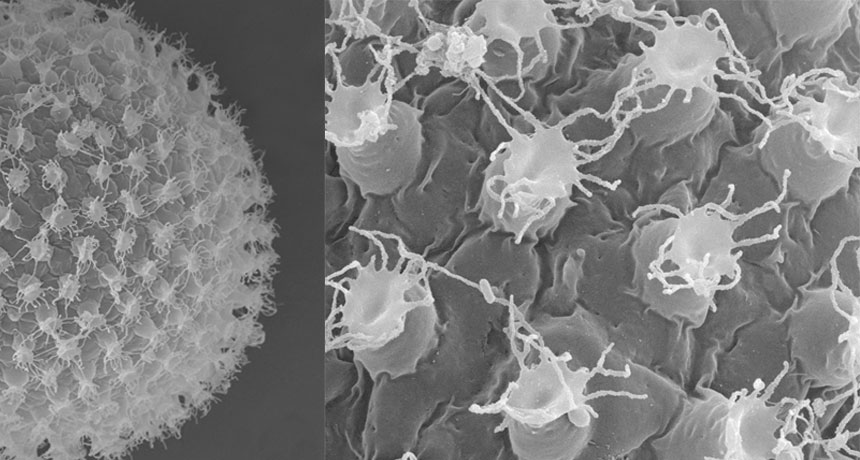A new species of tardigrade lays eggs covered with doodads and streamers

What a spectacular Easter basket tardigrade eggs would make — at least for those celebrating in miniature.
A new species of the pudgy, eight-legged, water creatures lays pale, spherical microscopic eggs studded with domes crowned in long, trailing streamers.
Eggs of many land-based tardigrades have bumps, spines, filaments and such, presumably to help attach to a surface, says species codiscoverer Kazuharu Arakawa. The combination of a relatively plain surface on the egg itself (no pores, for instance) plus a filament crown helps distinguish this water bear as a new species, now named Macrobiotus shonaicus, he and colleagues report February 28 in PLOS ONE.
With about 20 new species added each year to the existing 1,200 or so known worldwide, tardigrades have become tiny icons of extreme survival (SN Online: 7/14/17).
“I was actually not looking for a new species,” Arakawa says. He happened on it when searching through moss he plucked from the concrete parking lot at his apartment. He routinely samples such stray spots to search for tardigrades, one of his main interests as a genome biologist at Keio University’s Institute for Advanced Biosciences in Tsuruoka City, Japan.
These particular moss-loving creatures managed to grow and reproduce in the lab —“very rare for a tardigrade,” he says. He didn’t realize it was an unknown species until he started deciphering the DNA that makes up some of its genes. The sequences he found didn’t match any in a worldwide database.
His two coauthors, at Jagiellonian University in Krakow, Poland, worked out that he had found a new member of a storied cluster of relatives of the tardigrade M. hufelandi. That species, described in 1834, kept turning up across continents around the world — or so biologists thought for more than a century. Realization eventually dawned that the single species that could live in such varied places was actually a complex of close cousins.
And now M. shonaicus adds yet another cousin to a group of about 30. Who knows where the next one will turn up. “I think there are lots more to be identified,” Arakawa says.